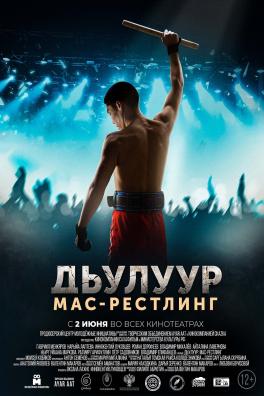Guest Column: How Sakha Cinema Reclaims Indigenous Sports on Screen

A guest post by Marge Stafford (pictured)
The Department of Slavic and East European Languages and Cultures offers courses on Indigenous Siberian literature that introduce students to cultures they may not have known existed.

While ethnic Russians dominate the country’s media and cultural narratives, Siberia—making up the majority of Russia’s landmass—is home to diverse indigenous communities with unique traditions, beliefs, and languages.
I was particularly interested in exploring how indigeneity shapes sports narratives in cinema, especially given the limited representation of Indigenous Siberian athletes both on the court and on screen.
In Russia, many ethnic groups operate their own film studios to ensure authentic cultural representation. One of the most prolific in recent years has been “Sakhafilm,” which represents the Sakha people of Northern Siberia. In 2024 alone, the studio released three sports-themed films: “Triumph,” “Speed Star,” and “Skirmish”—all written, directed by, and starring Sakha creatives. These films offer rare insight into what sports mean in contemporary Indigenous life.
A standout example is “Dzhulur: Mas-Wrestling” (2021), centered on a traditional Sakha sport where two players tug on a stick while seated, aiming to overpower their opponent.
The story follows Dzhulur, a young man returning from military service—the only stable livelihood for many Indigenous Siberians—who struggles to gain custody of his sister after their grandmother’s death. Unable to find work, he turns to mas-wrestling in Yakutsk, hoping to win a tournament and prove he can support her.
The film hits familiar genre beats—a physically and emotionally tested underdog, a climactic match—but layers them with cultural and systemic complexity. Dzhulur battles poverty, bureaucracy, and injury, yet finds strength in his heritage.
His final opponent is an American kickboxing champion, Derek Martins, whose interest in mas-wrestling is purely opportunistic. He lacks any cultural connection to the sport, highlighting the film’s deeper message: for Dzhulur, this is not just competition—it’s cultural preservation.
Martins is a curious antagonist. Unlike Dzhulur’s real struggles—government neglect, social inequality—Martins is an outsider, disconnected from the actual obstacles the protagonist faces. But in defeating him, Dzhulur symbolically asserts that true ownership of the sport lies with its originators.
The announcer’s declaration—“We now see that the best mas-wrestlers come from the Sakha nation”—confirms the film’s central thesis: cultural meaning matters.
The final match is intercut with shots of Dzhulur’s sister watching from the orphanage, his teammates cheering, and Martins alone with his coach. It’s a powerful visual metaphor for collectivism versus individualism, a theme echoed in much of Russian—and Sakha—cinema. In this case, it’s not just about winning; it’s about identity, heritage, and community.
The story resonates with similar tensions in North America. Take lacrosse, originally played by Indigenous peoples in Canada. By the late 19th century, they were barred from competitive play, and the sport was co-opted to build a new Canadian identity.
Even today, lacrosse retains an upper-class, white-dominated image, often detached from its Indigenous roots. Like mas-wrestling, it was transformed—commercialized, repackaged—at great cultural cost.
In “Dzhulur,” the American antagonist symbolizes this type of cultural appropriation. Dzhulur may not be able to fix the economic, legal, or systemic forces against him. But by embracing his identity and community, he reclaims meaning and agency.
His victory isn’t just about prize money or custody—it’s a quiet act of resistance, preserving heritage in the face of erasure.
